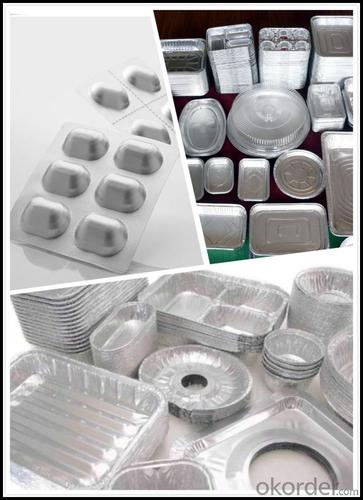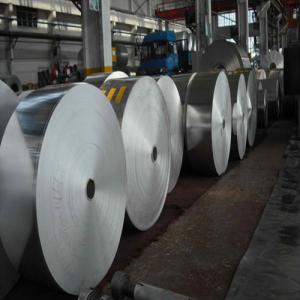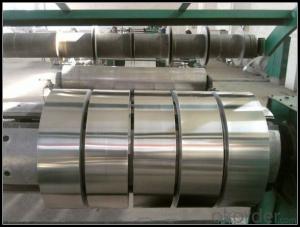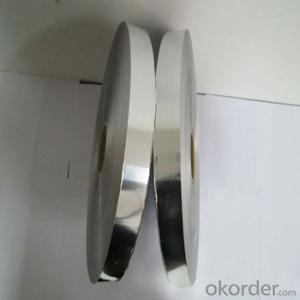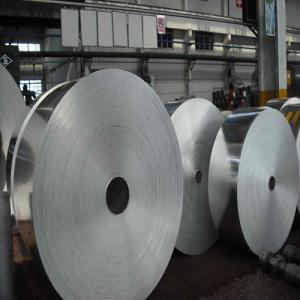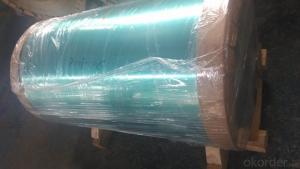Aluminum Flooring Transition Strips for Motor with Different Specifications
- Loading Port:
- Tianjin
- Payment Terms:
- TT OR LC
- Min Order Qty:
- 5 m.t.
- Supply Capability:
- 4999 m.t./month
OKorder Service Pledge
OKorder Financial Service
You Might Also Like
Specification
1. Specification of Aluminum
1) Alloy | 1050, 1060,1100, 3003 3004 3105 3005 5005 5052 etc |
2) Temper | O/H12/H14/H1/H18/H32/H34/H36/H38//H111/H112/H116/H321/T6/T651/T3/T351 etc |
3) Thickness | 0.1mm to 6mm |
4) Width | 20mm to 3300mm |
5) Coil weight | 100kgs to 6 tons depends on actual requirement |
6) Core material | Aluminum alloy |
7) Coil Inner diameter | 76mm, 152mm,or as required |
2. Application of Aluminum
(1).Interior: wall cladding, ceilings, bathrooms, kitchens and balconies, shutters, doors...
(2).Exterior: wall cladding, facades, roofing, canopies, tunnels,column covers , renovations...
(3).Advertisement: display platforms, signboards, fascia, shop fronts...
3. Feature of Aluminum
*Such coil is specially designed to replace aluminum ingot, due to the high export tax of aluminum ingot, the coil has better price than ingot.
*This type of coil can fit customer's remelting furnace just like ingot, no need to make any change to the production line that was previously used for ingot. The standard coil size and weight is very suitable for the feed gate of furnace.
*This type of coil causes less material wastage than ingot when remelted.
*Our coil is made directly from ore, no need to go though the ingot making process, quality is much better than other suppliers who use ingot scrap to make coil.
Be free from Oil Stain, Dent, Inclusion, Scratches, Stain, Oxide Dicoloration, Breaks, Corrosion, Roll Marks, Dirt Streaks and other defect which will interfere with use
4. Certificate:
SGS and ROHS(if client request, paid by client), MTC(plant provided), Certificate of Origin(FORM A, FORM E, CO), Bureau Veritas and SGS (if client request, paid by client), CIQS certificate
5. Image of Aluminum


6. Our Service
1. Reply your enquiry in 24 working hours. |
2. OEM, buyer design, buyer label services provided. |
3. Exclusive and unique solution can be provide to our customer by our well traned and professional engineers and staffs. |
4. We can provide free sample for your check |
5. We have the certification of ISO 9001 |
6. Timely delivery |
7. Special discount and protection of sales area provided to our distributor. |
8. Good after-sale service. |
7. FAQ
Q: What is the produce prase? | ||||
A: Normally it would be 40days after received your deposit. | ||||
Q: Can you provide free samples? | ||||
A: Yes, free samples will be sent to you on freight at destination. | ||||
Q: Can I get your latest catalogue? | ||||
A: Yes, it will be sent to you in no time. | ||||
Q: What is the MOQ? | ||||
A: 3 tons | ||||
Q: What are your payment terms? | ||||
A: We accept L/C, D/A, D/P, T/T, West Union,etc. |
- Q: Describe the process of manufacturing aluminum strips.
- <p>Aluminum strips are made through a series of processes starting with the production of aluminum ingots. The ingots are heated and then rolled into thin sheets in a hot rolling mill. This process reduces the thickness of the aluminum and elongates it into a strip. The hot-rolled strips are then cooled and may undergo further cold rolling to achieve the desired thickness and hardness. After rolling, the strips may be annealed to improve their ductility and strength. The final step includes cutting the strips to the required length and packaging them for distribution. This process ensures that aluminum strips have the desired properties for various applications such as construction, automotive, and aerospace industries.</p>
- Q: What is the difference between cold rolling and hot rolling of aluminium plate and aluminium strip? Which kind of aluminum plate is good? Speak a little more popularly
- Not appearing in spots. Suitable for mirror surface, spray coating. Hot rolling is more expensive than cold rolling
- Q: This question asks for a step-by-step guide on how to attach aluminum strips to a roof, likely for decorative or protective purposes.
- <p>To install aluminum strips on a roof, follow these steps: 1. Clean the roof area where the strips will be installed to ensure a good adhesive bond. 2. Measure and cut the aluminum strips to the required length. 3. Apply a high-quality construction adhesive or sealant along the back of the aluminum strips. 4. Carefully position the strips onto the roof, pressing firmly to ensure proper adhesion. 5. Use a level to ensure the strips are straight and aligned. 6. Allow the adhesive to cure according to the manufacturer's instructions. 7. Seal any gaps or joints between the strips with additional sealant if necessary. 8. Inspect the installation to ensure all strips are securely in place. Safety precautions such as using a ladder and wearing protective gear should be observed throughout the process.</p>
- Q: Can metal roofing materials be reused or recycled after they have been installed and used?
- <p>Yes, metal roofing materials can indeed be recycled after installation. Metal is one of the most recycled materials globally, and its recycling process is both efficient and environmentally friendly. When metal roofing reaches the end of its life, it can be collected, processed, and turned into new metal products, including new roofing materials. This recycling process helps conserve natural resources and reduces waste in landfills. The high recycled content of metal can also contribute to the sustainability and green credentials of construction projects.</p>
- Q: Is it possible to use aluminum strips to repair a wall that has been damaged by water?
- <p>Yes, aluminum strips can be used to cover a wall damaged by water, but it's not the most effective solution. Aluminum strips are typically used for decorative purposes or as a protective layer in certain applications. For water-damaged walls, it's better to first address the underlying issue, such as fixing leaks or improving drainage. Then, repair the damaged area with appropriate materials like drywall or plaster, followed by painting or other finishing touches. Using aluminum strips without proper repair may lead to further damage or an unsightly appearance.</p>
- Q: Can welding of aluminum with water-cooled DC hydrogen arc welding machine how much money
- If the 380V is about 4500 or so, if it is pure industrial machine more than 10 thousand. This, you can go to see the semi industrial uses of 380V Classic DC argon arc welder with special industrial grade Wei Odin WSME315B inverter pulse argon arc welding of aluminum AC argon arc welding machine is a machine with three".
- Q: Is it possible to utilize recycled aluminum in a project as an alternative to new raw materials?
- <p>Yes, you can use recycled aluminum in your project instead of new raw materials. Recycled aluminum is not only more environmentally friendly but also often more cost-effective. It requires significantly less energy to produce compared to new aluminum, reducing carbon emissions. Additionally, using recycled aluminum can help conserve natural resources and reduce waste in landfills. However, it's important to consider the quality and purity of the recycled material to ensure it meets the specifications required for your project.</p>
- Q: This question asks about the ease of installation for aluminum strips.
- <p>Aluminum strips are generally easy to install. They are lightweight and can be cut to size with basic tools. Installation usually involves peeling off a protective backing and adhering the strip to a clean, dry surface. For best results, it's important to ensure the surface is free of dust and grease. Some types of aluminum strips may require additional fasteners or adhesive for a secure fit, but overall, the process is straightforward and can be done by most DIYers with a little patience and attention to detail.</p>
- Q: This question asks about the durability and strength of aluminum strips for outdoor applications.
- <p>Aluminum strips are indeed strong enough for exterior use. They are lightweight, corrosion-resistant, and have high tensile strength, making them suitable for various outdoor applications such as siding, roofing, and fencing. Their resistance to weathering and low maintenance requirements add to their popularity in exterior settings. However, the specific strength and durability can vary based on the alloy composition and thickness of the strips, so it's important to select the appropriate grade of aluminum for the intended use.</p>
- Q: This question asks for the various factors that can influence the pricing of aluminum strips.
- <p>The price of aluminum strips is influenced by several factors, including the global supply and demand dynamics, the price of aluminum on the commodities market, production costs, transportation expenses, tariffs and trade policies, market competition, and economic conditions. Additionally, the quality and specifications of the aluminum strips, such as purity and thickness, can also affect pricing. Fluctuations in energy costs, especially for electricity used in the smelting process, can impact production costs and, consequently, the price of aluminum strips. Lastly, geopolitical events and environmental regulations can also have an indirect effect on the availability and cost of aluminum, thus influencing strip prices.</p>
Send your message to us
Aluminum Flooring Transition Strips for Motor with Different Specifications
- Loading Port:
- Tianjin
- Payment Terms:
- TT OR LC
- Min Order Qty:
- 5 m.t.
- Supply Capability:
- 4999 m.t./month
OKorder Service Pledge
OKorder Financial Service
Similar products
Hot products
Hot Searches
Related keywords






